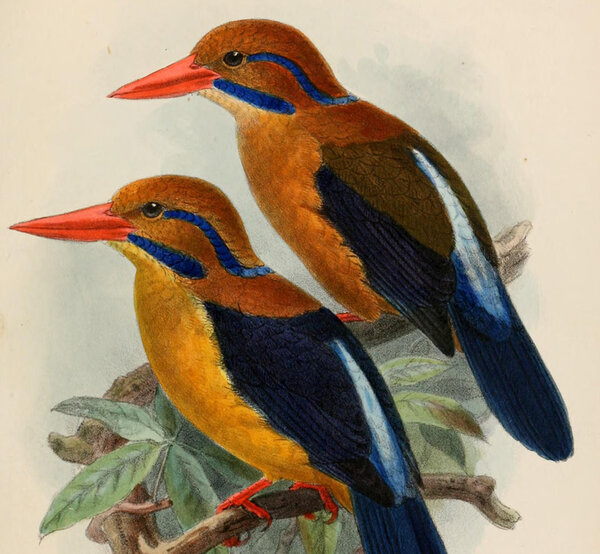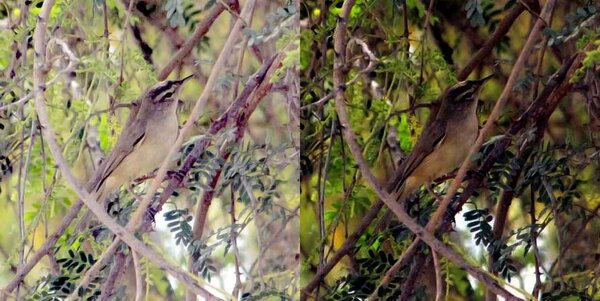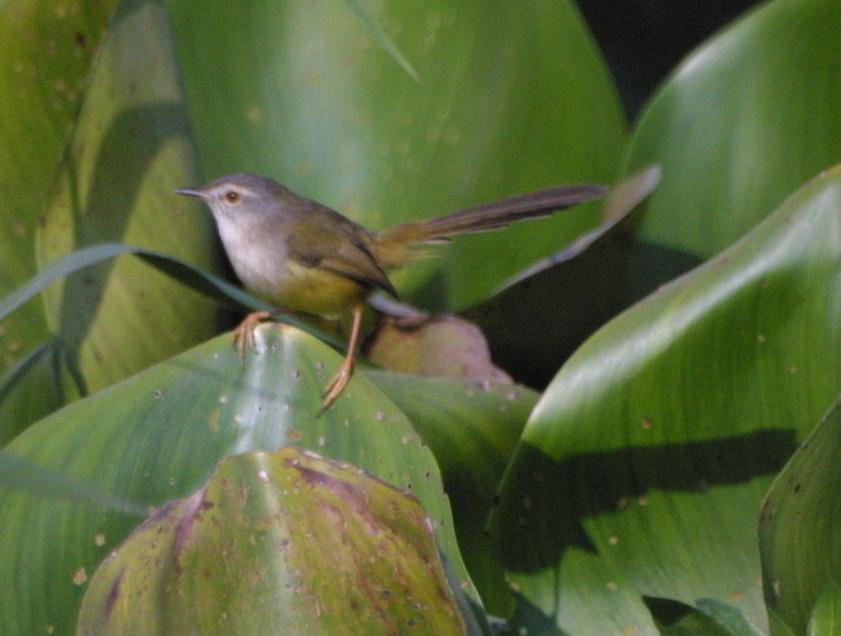Using eBird in 2016
“Make eBird your New Year's Resolution for 2016!”, they said, with a picture of a Steller's Sea Eagle that looked like it meant business. So I did.
“Make eBird your New Year's Resolution for 2016!”, they said, with a picture of a Steller's Sea Eagle that looked like it meant business. So I did.
I have now lost count of the number of forwarded copies of the “A scientist found a bird that hadn’t been seen in half a century, then killed it” mail that people have sent me. The collection of a Bougainville Moustached Kingfisher specimen by an AMNH team in Guadalcanal has drawn intense criticism and reignited the debate about whether scientific collection is justified or even necessary.
 [Illustration: J G Keulemans (1842–1912),
Novitates Zoologicae]
[Illustration: J G Keulemans (1842–1912),
Novitates Zoologicae]
I don't have anything new or insightful to add to this debate.
Two years ago, I bought a pair of Alpen Wings 8x42 ED binoculars. These are one of the least expensive mid-range birding binoculars, but a big step up from my earlier Nikon Trailblazer 8x42 at three times the price. Even so, I didn't expect them to be so much better than anything I had used before.
I am a big fan of written descriptions of field sightings.
Forcing myself to write down my observations and present them in an organised manner has helped me to learn to make better use of however little time I get with a bird in the field. Unless I did this consciously, it was all too easy to spend time looking at birds without seeing very much.
Written descriptions are not always reliable, and the reliable ones not always conclusive. A photograph, regardless of the quality, can often serve to clear up an incomplete description; but photographs can't be the beginning and end of identification, because they come with their own problems.
Here's an old thread from delhibirdpix that shows how photographs can mislead even a succession of expert observers. The ingredients were all in place: a location that has an extraordinary (and well-deserved) reputation for being a vagrant-trap, a small warbler with an unmistakable black brow, and only one species anywhere in the region matching that description.

But two and two did not add up to Black-browed Reed Warbler in this case. The identification hinged entirely on the black brow, which turned out to be an artifact introduced while lightening a dark photograph, as shown in the comparison above. The bird was (probably) a Booted Warbler with an entirely unremarkable pale brow.
Here's another post (from about the same time) about a similar problem.
Late in December 2009, as a birthday present to myself, I went on a
solo trek to Dayara Bugyal, a high-altitude alpine meadow in Garhwal.
I meant to write about the week I spent in the mountains, but upon my
return, I found the experience too overwhelming to try to describe all
at once.
Some six months after the trek, I posted a a photograph from my first campsite. Nearly a year later, I wrote about my decision to forego a field guide on the trek; that's where the paragraph quoted above comes from. It's been nearly five years since then, and I've typed that first sentence a dozen more times, but I never got much further.
One of my most enduring memories of the trip is of a small grey bird crawling up the face of a rock cliff just below Barsu village. I was driving back to Uttarkashi in the late afternoon after the trek, and I caught a flicker of movement on the cliff from the corner of my eye. I knew instantly what it was—a Wallcreeper, a bird I had been hoping to find for the past five years. I had barely a minute to admire it, but I'll never forget the sudden flash of scarlet when it flew away.
It's almost Wallcreeper season where I live now. They're a familiar sight in passage to lower altitudes in early winter, but that first sighting will always be the most precious.
I've read many pieces about the people after whom birds are named, and it struck me recently that most of them are male. Not surprising, since there must have been many more male ornithologists than women; but there are nevertheless many birds named after women. Because of the regularity of Latin grammar, we can find a considerable number just by looking for names that end in -ae.
I gave a talk on feathers to the Delhibird group at the WWF auditorium, but the video and presentation are not yet available on this web site.
Write to ams@toroid.org if you're interested in them.
Last christmas, I saw a number of Richard's Pipits at Dadri. Yesterday, on a trip with Ramit and Ammu, I was pleased to make their acquaintance again. We had multiple good views of at least one bird out in the open, and saw and heard a few others in flight.
I noticed this time that, at a distance, the streaking on the back can be more obvious when the bird is running with its head down and body held parallel to the ground than when it stands upright, something that can be seen briefly in this video:
Perhaps when the bird is in its characteristic upright posture, the back feathers are pushed together, and the streaks are shifted out of alignment?
Apart from the pipits, the highlight of the morning was watching three young Peregrine Falcons hunting waders and waterfowl over the lake.
(Meanwhile, a number of Blyth's Pipits have been seen in Karnataka this year. I wonder if there are any at Sultanpur yet?)
My checklist of bird species encountered in and around Mangar banni, a community-protected forest in the Aravali foothills near Delhi.
Today I recorded a Yellow-bellied Prinia Prinia flaviventris calling in the Typha reedbeds at Okhla Bird Sanctuary in New Delhi. The bird was very close to me—though I could not see it in the overgrown reeds—and one can hear its wing-snapping display in the recording. The incessant drone of Cicadas provides a backdrop.
Here's an MP3 file (which I created using Audacity), and here's an old photo of the species, also from Okhla.

(There are much better photographs on OBI.)
This is the first time I have used my new Olympus LS-11 recorder, and I am very impressed with the sound quality I obtained, given my complete inexperience at nature sound recording. I used the default 44.1KHz/16-bit settings, with the "low" mic sensitivity setting, and a recording level of 10.
I am delighted to have been able to record one of my favourite singers as my first subject. I've always tried and failed to describe the call to people, but now I can let the bird speak for itself.